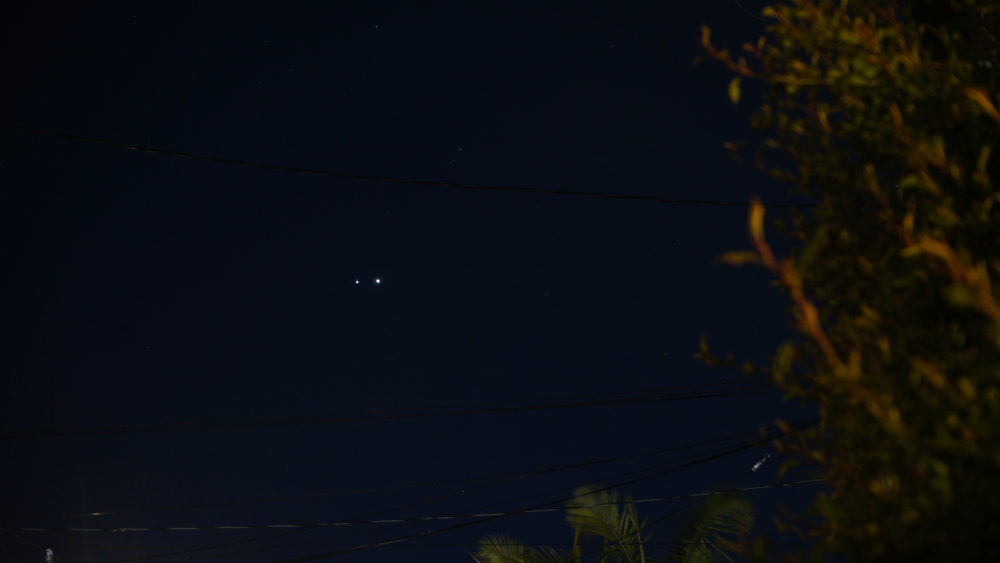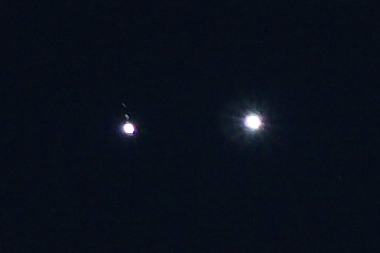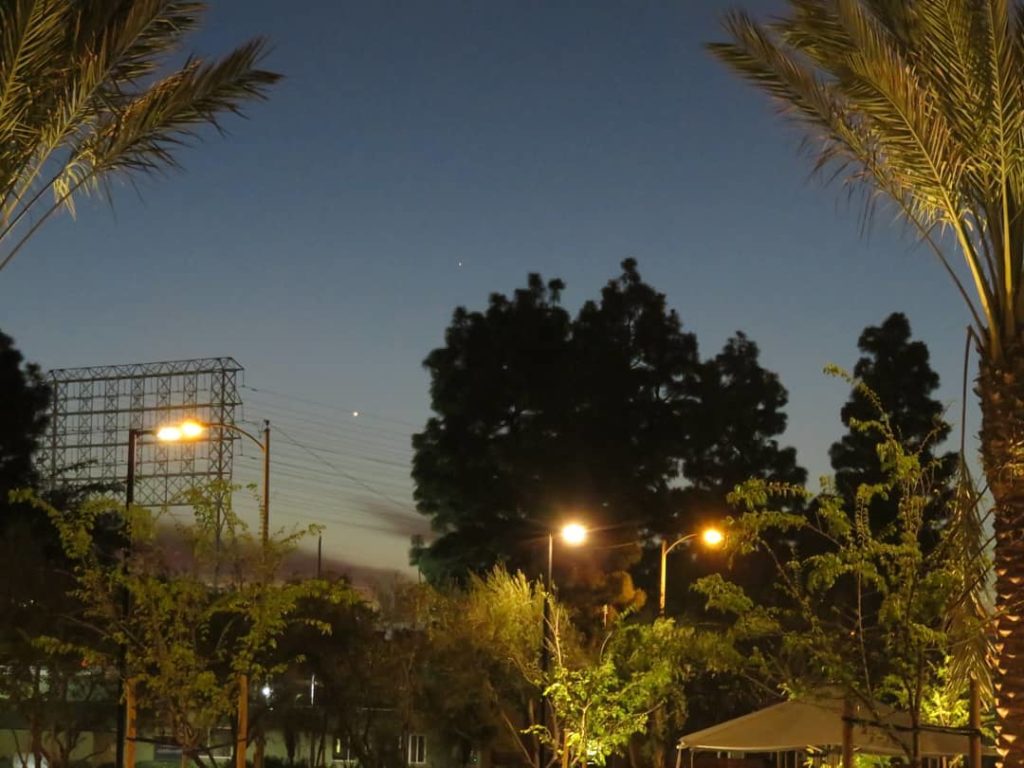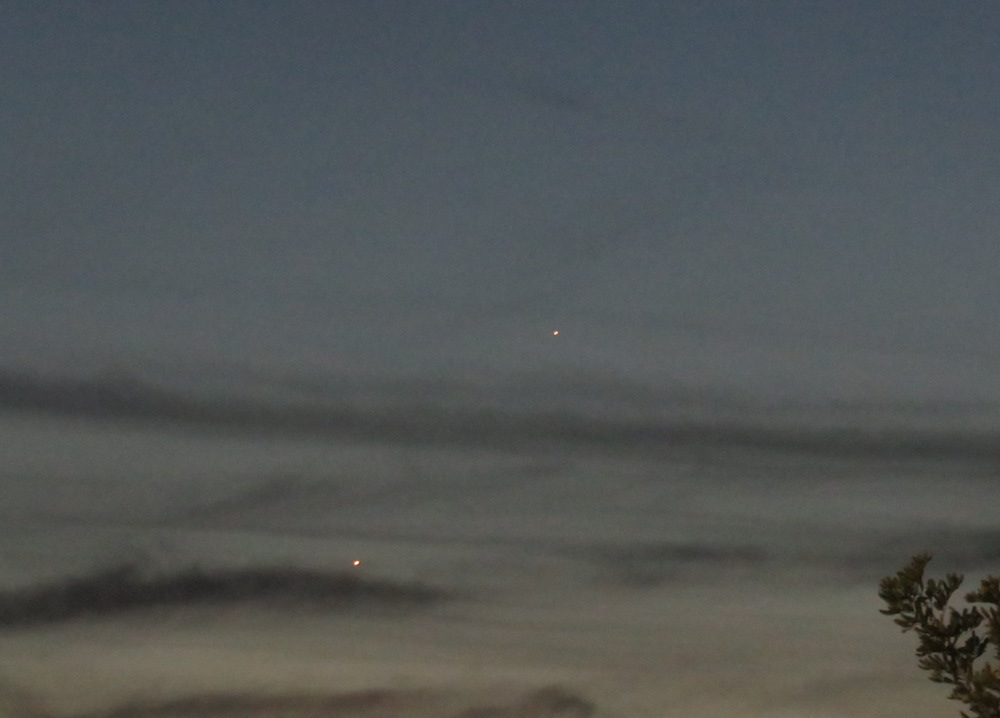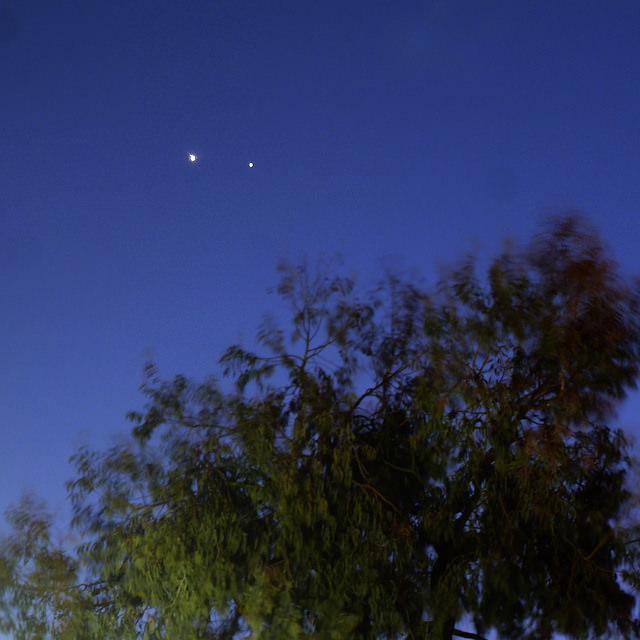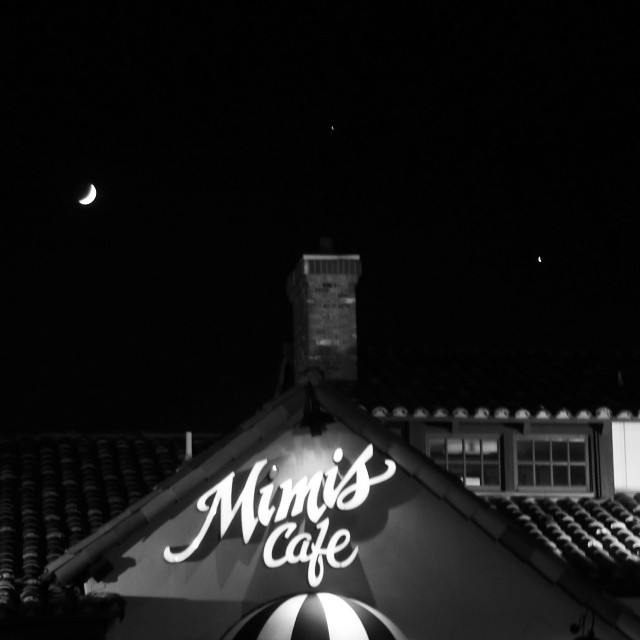With rainstorms for the first half of the week, I figured the sky would be clouded over, and I completely forgot about the conjunction of Venus and Jupiter tonight.
Despite wind, rain and even hail today, it cleared up this afternoon. I happened to run out for groceries and looked up from the parking lot to see a blue sky with Venus and Jupiter right next to each other!
I snapped a quick shot with my phone. And then got out the good camera and tripod when I got home.
And…I think I may have caught some of Jupiter’s moons?!?
The brighter planet to the right is Venus. The almost-as-bright one to the left is Jupiter. Venus shows diffraction rays, but Jupiter doesn’t…but those dots lined up on one side of it? They’re in the right location to be Callisto, Ganymede and (possibly) Io!
I’ve got to remember to use the telephoto after getting the wide shot the next time I’m taking night sky photos with planets. Just in case.
